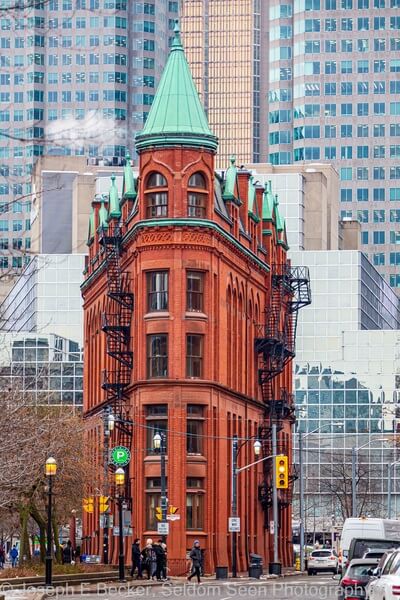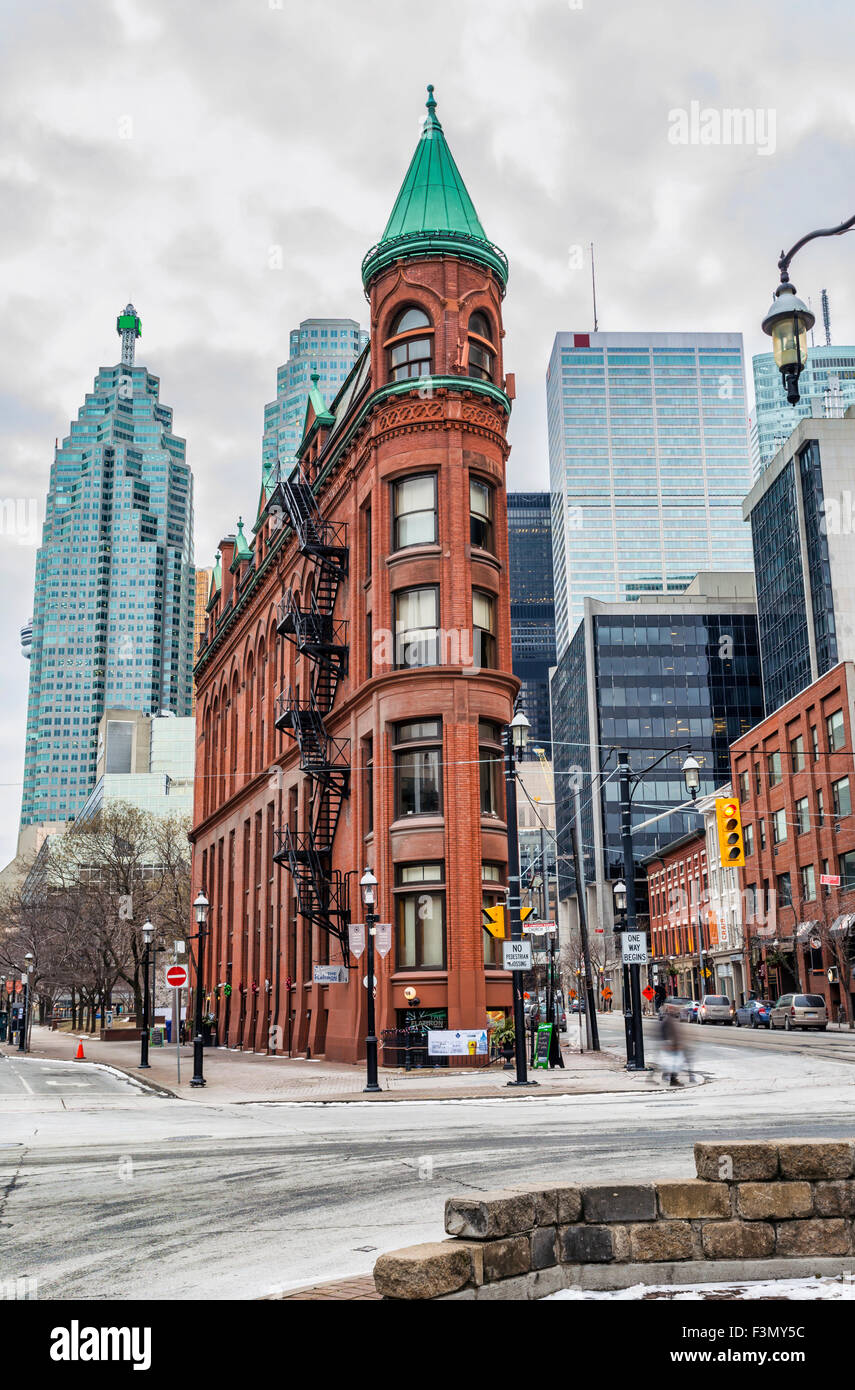Visiting the Gooderham Building Weather and the Best Days to Explore It.
Visiting the Gooderham Building Weather and the Best Days to Explore It.
Blog Article
Reveal the Rich Background Behind the Gooderham Structure in Toronto
The Gooderham Building, an exemplary symptom of Richardsonian Romanesque design in Toronto, has a fabled past that prolongs beyond its striking red block façade. Commissioned by the significant Gooderham and Worts distillery in 1891, this structure has played an essential duty in forming the urban landscape of the St. Lawrence Market area.

Beginnings of the Gooderham Structure
Constructing a long-term tradition, the Gooderham Building, additionally called the Flatiron Building, became an icon of Toronto's building evolution in the late 19th century. The building's origins map back to 1891 when it was commissioned by the Gooderham and Worts distillery, one of copyright's biggest distilling business. Designed by engineer David Roberts Jr. Gooderham Building address., the framework was uniquely placed at the intersection of Front and Wellington Streets, making use of a triangular great deal created by the merging of these thoroughfares
The building's building used regional red block and terracotta, developing a distinctive visual that matched the burgeoning cityscape. Initially planned to house the Gooderham and Worts workplaces, the structure stood for the success of the distillery, which had actually become a significant contributor to Toronto's economy. Especially, the completion of the Gooderham Structure accompanied a period of fast urbanization that characterized the age.
The establishment of this building treasure not just showcased innovative style but likewise prepared for future developments in Toronto. Today, it stands as a testament to the city's abundant background and flexibility, remaining to draw in visitors and admirers from around the world.
Architectural Significance
The architectural value of the Gooderham Building expands beyond its unique flatiron shape, reflecting the cutting-edge spirit of late 19th-century style. Completed in 1892, the structure exemplifies the Richardsonian Romanesque design, identified by its robust stonework, rounded arches, and detailed outlining. The strong usage of contrasting products, especially the warm red block and limestone accents, boosts its visual allure and demonstrates the workmanship of the era.
The building's three-story design is remarkable for its harmonious percentages and sophisticated cornice, which add to its iconic silhouette against the Toronto skyline. The narrow whole lot on which it stands positioned distinct difficulties, yet the designers, in this case, designed a structure that made the most of the offered space while maintaining visual equilibrium.
Additionally, the Gooderham Structure is a testament to the versatility of architectural style in urban atmospheres. Its long-lasting visibility amidst contemporary growths illustrates the worth of maintaining historic architecture as a means of honoring a city's past. Today, it stays a cherished landmark, mirroring both the building trends of its time and the developing story of Toronto as a dynamic city center.
Role in Toronto's Development
Emerging as a principal in Toronto's city landscape, the Gooderham Structure contributed dramatically to the city's growth throughout the late 19th century. Built in 1892, this famous habitation stood for not just the building aspirations of the time yet additionally the burgeoning economic landscape of Toronto. The building was initially created to function as a stockroom for the Gooderham and Worts distillery, which was just one of the largest distilleries in the British Empire. Its calculated area at the crossway of Front and Wellington Streets facilitated the motion of items and solutions, emphasizing the area's value in the city's business activities.
As the city expanded, the Gooderham Structure ended up being a vital component of the St. Lawrence Market location, which was a hub of trade and commerce. In significance, the Gooderham Structure is not simply an architectural site; it played a crucial function in forming Toronto's identification and economic growth throughout a transformative period in its history.
Social Impact and Heritage
Gooderham Structure's distinctive building style and historic importance have actually left an indelible mark on Toronto's social landscape. As one of the city's most identifiable sites, its unique flatiron shape and intricate brickwork exhibit the Victorian architectural trends of the late 19th century. This framework not just works as an aesthetic anchor in the St. Lawrence area but likewise embodies the spirit of an expanding city throughout a period of financial development.
The structure has become an icon of Toronto's abundant history, inspiring regional musicians and photographers who seek to record its appeal. Its existence has promoted a sense of area identification, adding to the narrative of city development. In addition, the Gooderham Building has actually played a crucial role in the tourism sector, drawing in visitors eager to explore its storied past and architectural beauty.
In enhancement to its visual appeal, the structure envelops a story of durability and adaptation, as it has actually transitioned through numerous usages over the years - Gooderham Building address. Hence, the Gooderham Building stands not just as a monolith of building value but likewise as a testimony to the progressing cultural heritage of Toronto

Reconstruction and Preservation Initiatives
Numerous remediation and conservation initiatives have been taken on to ensure the Gooderham Structure stays an important part of Toronto's building heritage. Originally completed in 1892, the building has actually undertaken substantial remodellings to attend to architectural problems while retaining its historical integrity. The most noteworthy remediation occurred in the late 20th century when the structure was meticulously reconditioned to meet modern-day security requirements without compromising its initial design aspects.
These initiatives included fixing the distinctive red-brick frontage, recovering the famous triangular form, and preserving the detailed masonry details. Additionally, the building's interior has actually seen mindful updates that appreciate its historic relevance, ensuring that initial attributes such as wood light beams and attractive moldings are kept.
The Gooderham Structure is currently secured as an assigned heritage residential or commercial property under the Ontario Heritage Act, which assists protect it from inappropriate alterations. Area involvement has actually played an important function in these preservation initiatives, with regional campaigning for have a peek at this site groups raising recognition regarding the building's historic value. Consequently, the Gooderham Structure stands not only as a functional space but also as a testament to Toronto's abundant building background and withstanding social legacy.
Final Thought

Please visit one of our local supporters - Gamerama And The Repair Store - Iphone Repair Near Me
Report this page